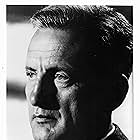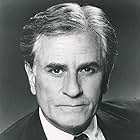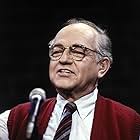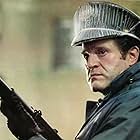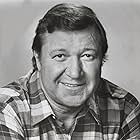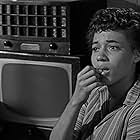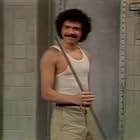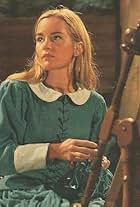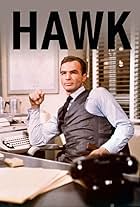Neste drama semanal, um dedicado assistente social que tenta resolver os problemas de seus clientes na fascinante mistura de culturas que compõe a cidade de Nova York.Neste drama semanal, um dedicado assistente social que tenta resolver os problemas de seus clientes na fascinante mistura de culturas que compõe a cidade de Nova York.Neste drama semanal, um dedicado assistente social que tenta resolver os problemas de seus clientes na fascinante mistura de culturas que compõe a cidade de Nova York.
- Ganhou 1 Primetime Emmy
- 2 vitórias e 7 indicações no total
Explorar episódios
Avaliações em destaque
Superb drama series showcasing the young George c. Scott and a Hall of Fame list of guest stars. One characteristic of the series is that the episodes don't conclude with the conflicts neatly resolved. When the episodes conclude we are not told if the little girl went back to school or if the neighborhood was successfully integrated. The feature of unresolved conflict was unique in dramatic tv at the time, and may have contributed to the series low ratings and regrettable cancelation.
The comparison has been made between this show and "Naked City", which was canceled the spring before this one appeared. Both were grimily serious shows filmed on the streets on New York using new York City Stage actors, (many of whom became famous movie and TV actors). Both shows were well done but there is more than a few months difference in thinking between them . Naked City tended to show stories with neat, (if often tragic) endings. ESWS didn't show ending at all. Everything it depicted was an ongoing problem, with no clear solution. The heroes could not simply arrest someone to end the problem at the conclusion of the hour. Often, they are nothing more than powerless observers, which is not very dramatically pleasing. The "Who do you kill" episode is somewhat disappointing to me because of the complete inefficacy of the heroes- it seems to rub your face in the problem but supplies no solutions. At least that's "real".
The second difference is that ESWS was the first TV program to come to terms directly with the problem of race, to show white audiences what it was like for a black man or woman in America. Black faces are almost totally absent from Naked City. Imagine a "realistic" story about big-city policeman who investigate nothing but crimes involving Caucasians. ESWS showed New York the way it really was- and is.
The second difference is that ESWS was the first TV program to come to terms directly with the problem of race, to show white audiences what it was like for a black man or woman in America. Black faces are almost totally absent from Naked City. Imagine a "realistic" story about big-city policeman who investigate nothing but crimes involving Caucasians. ESWS showed New York the way it really was- and is.
10coop-16
Apparently , the early nineteen sixties was one of the under appreciated eras of TV history. It may not have been a " Golden age; but at least it was a silver one. It began with Newton Minow lamenting the fact that Television was a vast wasteland, it ( probably ) ended when Slattery's People left the airwaves for good. It was a period of interesting writing and of shows that were socially conscious without ( usually ) being preachy. While some of these programs are never rerun and are not even on DVD( Witness SLattery's People), East Side/West Side was actually rerun about seven years ago on the sadly departed TV network TRIO. Of course, It helped that East Side West Side starred a true legend of acting in George C. Scott. Unlike Slattery's People, which (usually) tried to be pretty optimistic, for all its ironic undercurrents, East Side West Side was gritty, melancholy and frequently downright depressing. I have only seen one full episode. I saw as part of a high school class on "Black America" It was the classic, widely banned, Who Do you Kill, with James Earl Jones. I still remember how well acted and written it was, and how utterly sad. Like Slattery's People, and (maybe) the even more obscure Channing, it deserves to be on DVD.
Great series with George C Scott at his usual best! Gritty black and white, ahead of its time. On location on streets of the Big Apple just made it that much more realistic, like Naked City was! Can not believe it lasted only one season. Just goes to show you how stupid the bean counters on the networks are!
Beautiful series-- a one-season long experiment that tried to reflect a tumultuous time-period (its single season encompassed JFK's death, the Civil Rights Bill, killings of Civil Rights workers in Alabama, escalation of fighting in Vietnam). George C. Scott played a social worker in Manhattan, Cicely Tyson his secretary, and before they softened the series toward the end toward whimsey, they produced at least three episodes that have stuck in my head for nearly 40 years: 1. social services take-away the child of a prostitute, who was portrayed as a devoted mother-- her grief was seismic; 2. a young black father who loses a baby to a rat's attack gets a weapon and wanders through Harlem looking for someone to kill; 3. a middle-class black couple moving to the suburbs sets off a calculated real-estate stampede, and even the liberal whites who sponsored them finally rebukes them. The second of these episodes was blocked-out in Georgia-- am surprised we got to see the other two; criticism at the time inevitably used the killing word "grim". Actors were drawn from the NY casting-pool, and shooting was done in the streets of the city.
Você sabia?
- CuriosidadesDiana Sands was considered for the role of Jane Foster .
- ConexõesFeatured in TV Guide: The First 25 Years (1979)
Principais escolhas
Faça login para avaliar e ver a lista de recomendações personalizadas
- How many seasons does East Side/West Side have?Fornecido pela Alexa
Detalhes
- Data de lançamento
- País de origem
- Idioma
- Também conhecido como
- El este y el Oeste
- Locações de filme
- Empresas de produção
- Consulte mais créditos da empresa na IMDbPro
- Tempo de duração1 hora
- Cor
- Mixagem de som
- Proporção
- 1.33 : 1
Contribua para esta página
Sugerir uma alteração ou adicionar conteúdo ausente

Principal brecha
By what name was East Side/West Side (1963) officially released in Canada in English?
Responda





